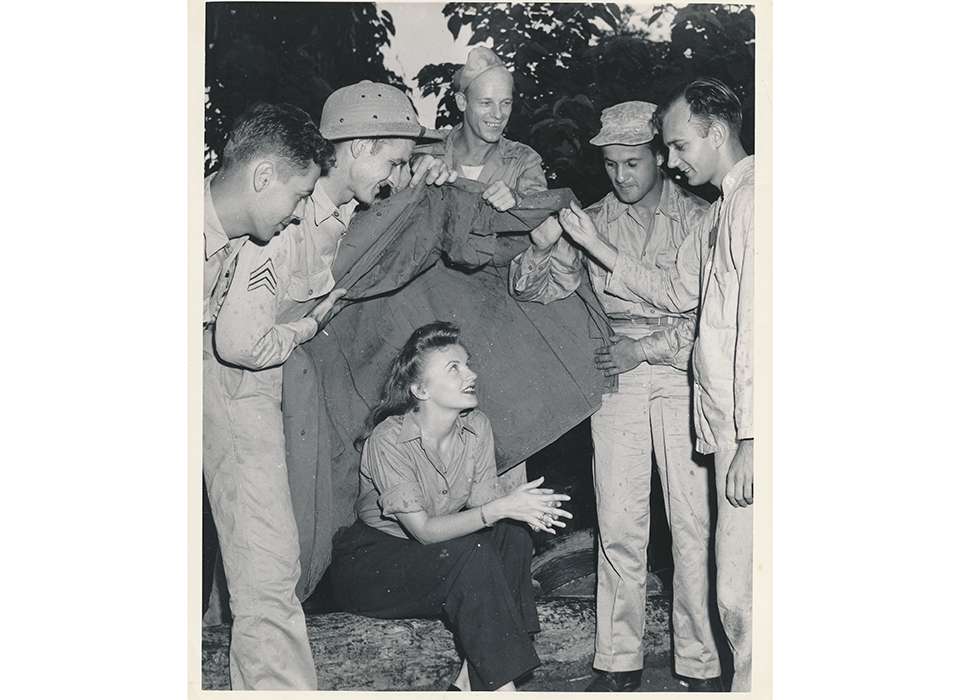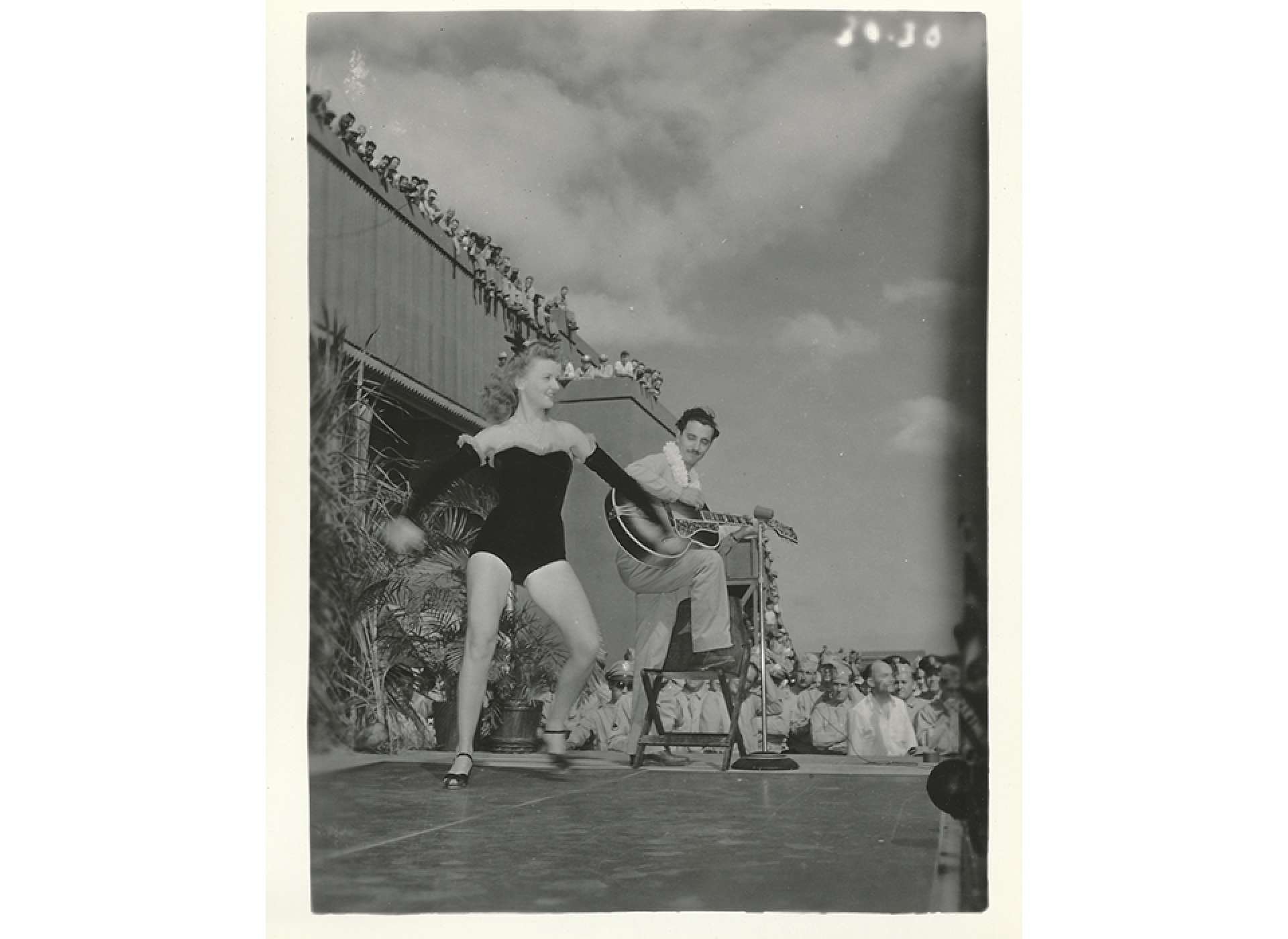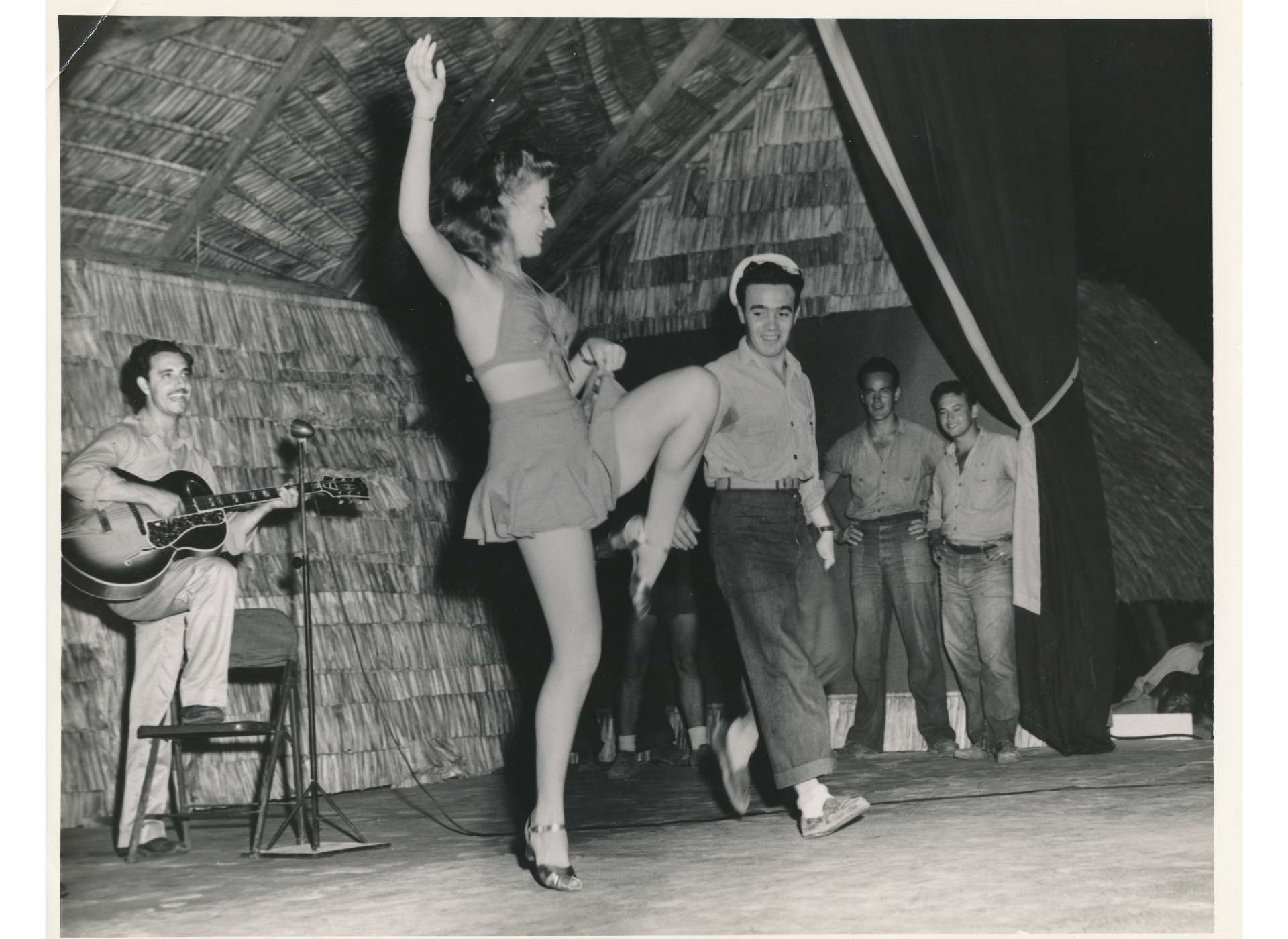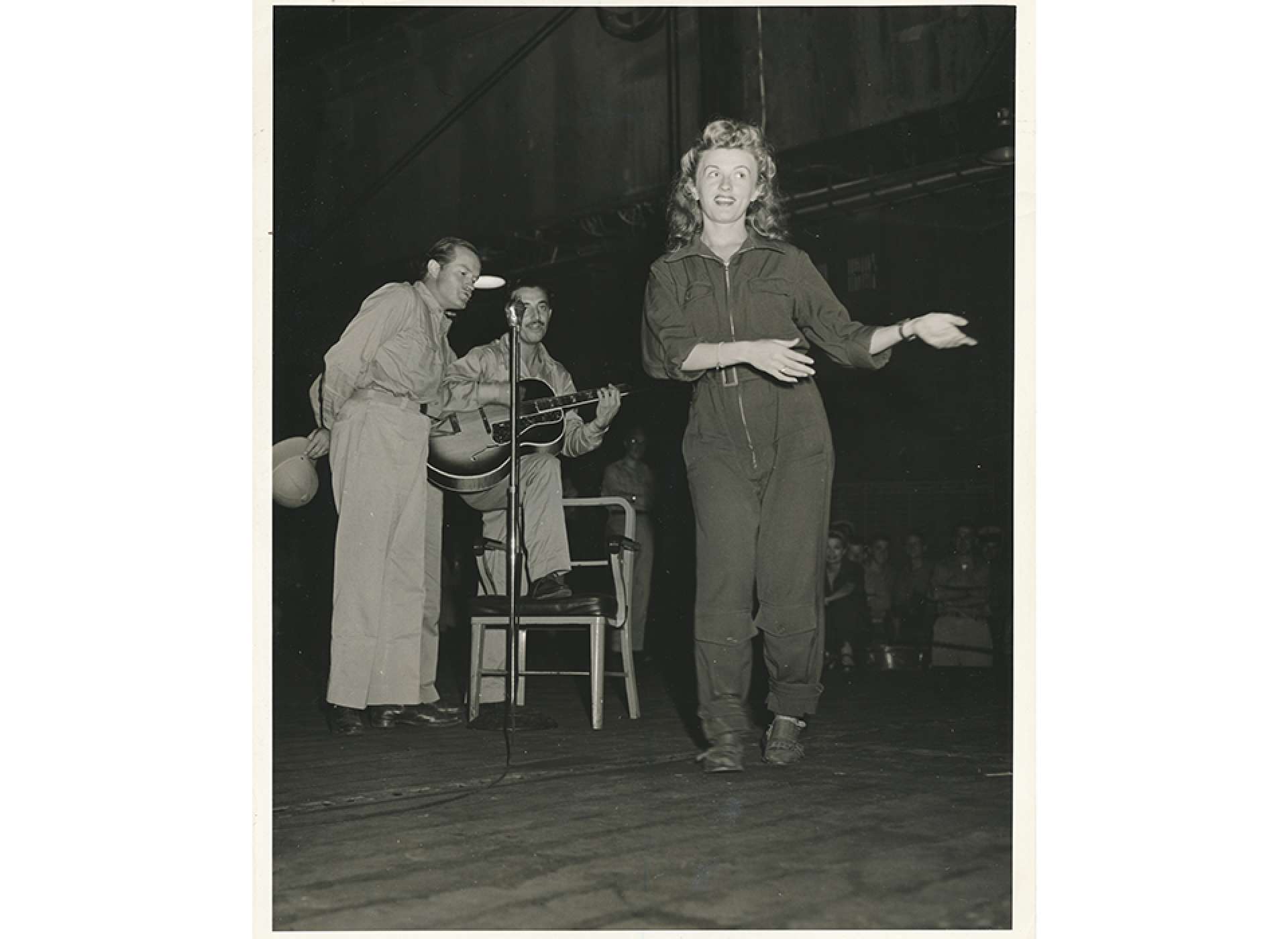In 1944, Bob Hope’s troupe of entertainers gained a new member, Patricia Thomas. Hope had seen Thomas, a tap dancer, perform in Hollywood and invited her to join his traveling troupe. At the time, Hope was such a big star and Thomas was such a young performer that she initially didn’t trust his invitation. After a meeting with Hope at Paramount Studios, she knew he was serious about her becoming one of “Hope’s Gypsies,” his name for his traveling troupe. The troupe consisted of Bob Hope, star and the group’s leader; Jerry Colonna, mustachioed trombonist and comedian; guitarist Tony Romano; writer and vaudevillian Barney Dean; and the troupe’s other female performer, vocalist Frances Langford. The addition of Thomas, a tap dancer, brought another talent altogether.
Thomas was born August 1, 1922 in Erie, Pennsylvania, but she and her mother moved to California shortly after her father died when Thomas was still young. She was 16 when she started dancing with her teacher and manager, Al Ross, who set her on a training regimen of three-four hours of practice every day. Hard work and dedication like this would pay off on her first adventure traveling with Hope.
From July 10-August 31, 1944, the group embarked on an epic USO Camp Shows tour of the Pacific Islands to entertain American servicemen and women. The group staged around 150 shows in the two months they were on the road. Patty Thomas was by far the youngest member of the ensemble. While underway, on August 1, Thomas celebrated her 22nd birthday on Green Island, off modern-day Papua New Guinea.
For her set, tap dancer Thomas traveled with a tap board that was laid down on the stage for her steps. She had performed for audiences before, but never ones as large as the crowds she would see in the Pacific. Guys would cover fields and hillsides, climb trees or anything else available, and would wait hours outdoors, in blazing sun or in pouring rain to get a glimpse of the entertainers. One of their first performances of the tour was at the Nimitz Bowl, the huge arena in Hawaii. Before the performance, Hope turned to Patty backstage and asked "All these people, what do you think?" She replied, "Oh Bob, they're never going to hear my taps." He said, "Don't worry, I'll take care of it, just go out there and dance." For Patty’s entire performance, Hope followed her around the stage with a microphone so the troops would be able to hear her footwork. Even though she was so young, she (and the others) trusted their boss completely. Hope always made his troupe feel comfortable.
Photographs Courtesy of the Bob & Dolores Hope Foundation
-

Hawaii, 1944
-

Follow the leader, Summer 1944
-

Aboard the USS Altamaha (ital Altamaha), Summer 1944
Thomas recalled thinking that all of these young men would be very disappointed if they couldn't hear her tap dancing. She later noted how naive she was, realizing that the appeal of a young, long-legged girl in a minimal dance costume perhaps outweighed the attention paid to her routine and execution of perfect, clean taps. Thomas was often called up onto the stage with Hope, who would say to the audience, “I just wanted you boys to see what you’re fighting for.” In those moments, she stood for all American women.
But her role wasn’t all about sexuality, and a central part of her performance was calling young servicemen up on stage to dance with her. She would ask them to mimic her movements and they would do exactly what she asked, often with hilarious results. Being able to act silly, act their age, and laugh at themselves was a tremendous release for many young serviceman. Looking back, Patty remembered "nothing was more fulfilling than seeing [them] smile.”
The tour came with hardships for the troupe as well. Both Hope and Thomas developed tropical ulcers, or "jungle rot,” also common among the soldiers. In Thomas’s case, it manifested in her ears and she even suffered hearing loss. But she noted:
“Once you've entertained these boys and you've made them happy, you know that you have to keep going until you just can't do it anymore."
Patty Thomas
Like on Hope’s previous tours, wartime travel for the group again proved risky. Lt. Frank Ferguson was the pilot who flew the troupe from New Caledonia to Australia. While flying along the Australian coast, one of the plane's engines died. On the descent, Ferguson gave the order to toss everything they didn’t need overboard. They tossed out luggage, souvenirs, even cases of Scotch. Thomas was so afraid they would throw out her tap shoes that she tied them around her neck. They made an unplanned, but safe, water landing in their PBY flying boat in Laurieton, Australia and the relieved troupe added some new tour stops for the locals there.
After World War II, Thomas continued to travel with Hope for decades. She admired him so much she would commit to traveling with him on a moment’s notice, and her suitcase was always packed. Thomas remained close to the Hopes and she and Frances Langford, her traveling buddy and roomie, remained lifelong friends. Thomas died at age 91 on March 29, 2014 in Newport Beach, California.
Kim Guise
Kimberly Guise holds a BA in German and Judaic Studies from the University of Massachusetts Amherst. She also studied at the Universität Freiburg in Germany and holds a masters in Library and Information Science (MLIS) from Louisiana State University. Kim is fluent in German, reads Yiddish, and specializes in the American prisoner-of-war experience in World War II.
Cite this article:
MLA Citation:
APA Citation:
Chicago Style Citation:












